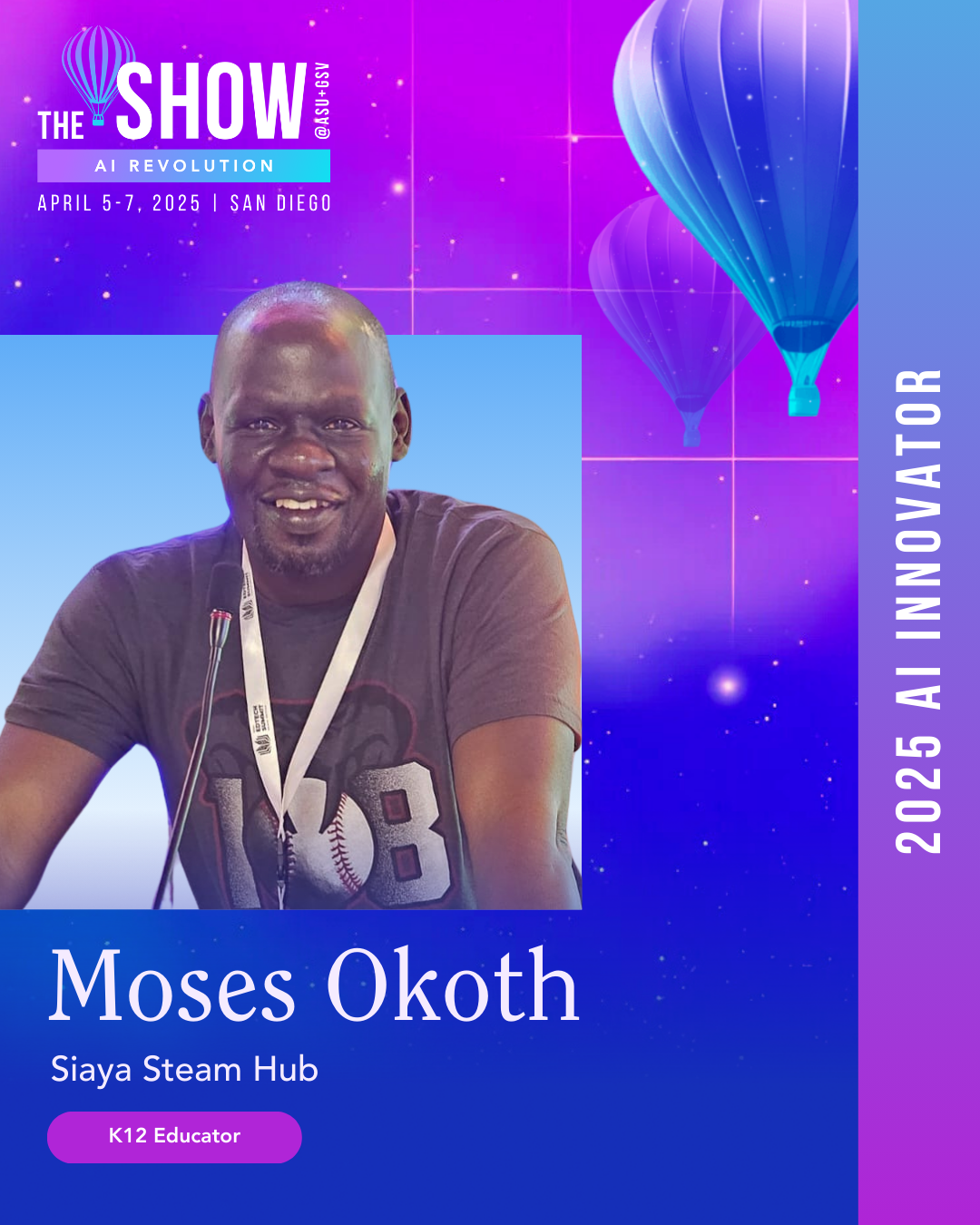Catalyzing a Change in Africa’s Youths Perception About Farming
,
Presenters

Session description
Purpose & objective
Purpose and Objectives of the Agribot Challenge Presentation:
Educational Challenge/Situation:
The educational challenge addressed by the Agribot Challenge is the need to prepare students for the intersection of agriculture and technology. With the global population increasing, there's a growing demand for innovative solutions in agriculture to ensure food security and sustainability. Students need to develop skills in robotics, data analysis, and problem-solving to contribute to this field effectively.
Technology Intervention:
The Agribot Challenge leverages technology, including robotics platforms (e.g., LEGO Mindstorms, Arduino-based systems), data sensors (e.g., soil moisture sensors, temperature sensors), and programming tools (e.g., Scratch, Python). These technologies enable students to design and build agricultural robots (Agribots) capable of addressing real-world agricultural problems.
Models Employed:
The Agribot Challenge is based on a project-based learning (PBL) model. PBL encourages students to explore complex, authentic problems, work collaboratively, and apply critical thinking and problem-solving skills. It aligns with constructivist and inquiry-based learning models, where students actively construct knowledge and seek solutions to real issues.
Objectives as Participant Outcomes:
Upon participating in the Agribot Challenge, participants (students) will achieve the following outcomes:
Knowledge Construction:
Understand real-world agricultural challenges and the role of technology in addressing them.
Gain knowledge about agricultural practices, such as soil management, crop cultivation, and pest control.
Innovation and Design Thinking:
Develop the ability to follow a deliberate design process for generating innovative solutions.
Utilize digital tools for planning, prototyping, and iterative design.
Exhibit perseverance and adaptability when faced with open-ended agricultural challenges.
Computational Thinking:
Formulate well-defined agricultural problems suited for technology-assisted solutions.
Collect, analyze, and represent agricultural data using digital tools.
Create descriptive models to understand complex agricultural systems.
Understand how automation can enhance agricultural processes.
Practical Skills:
Design and build functional Agribots using robotics platforms and sensors.
Program Agribots to perform specific agricultural tasks, such as planting, harvesting, or monitoring.
Collaboration and Communication:
Collaborate effectively in teams to tackle agricultural challenges.
Communicate their findings and solutions clearly and effectively, both orally and in writing.
Evidence of Success:
The success of the Agribot Challenge can be assessed through various means:
Evaluation of Agribot designs and prototypes.
Assessment of students' problem-solving abilities during the challenge.
Documentation of student reflections on the learning process.
Measurement of student engagement and enthusiasm for STEM subjects.
Comparative analysis of students' agricultural knowledge before and after the challenge.
Any resulting innovations or viable Agribot solutions to agricultural challenges in the local community.
The Agribot Challenge aims to equip students with the knowledge, skills, and innovative mindset required to address pressing agricultural issues using technology while fostering a passion for STEM education. Success will be demonstrated through tangible learning outcomes and potential real-world applications of the Agribot solutions.
Outline
Presentation Outline for the Agribot Challenge (45 minutes):
Introduction (5 minutes):
Content: Brief overview of the Agribot Challenge and its importance.
Activities: Quick introduction and setting the context.
Understanding Agriculture and Technology (5 minutes):
Content: Introduction to agriculture and its challenges.
Activities: Brief discussion with the audience.
Project-Based Learning and the Agribot Challenge (5 minutes):
Content: Explanation of project-based learning.
Activities: Short discussion on the benefits of PBL.
Hands-On Agribot Challenge (15 minutes):
Content: Overview of the Agribot Challenge.
Activities:
Part 1 (5 minutes): Form teams and introduce the challenge.
Part 2 (5 minutes): Teams select a robotics platform and plan their Agribot.
Part 3 (5 minutes): Teams present initial designs.
Computational Thinking in the Agribot Challenge (5 minutes):
Content: Introduction to computational thinking.
Activities: Brief exercise on formulating problems.
Prototyping and Testing (5 minutes):
Content: Explanation of the iterative design process.
Activities: Teams revise their Agribot designs briefly.
Presenting Agribot Solutions (5 minutes):
Content: Emphasis on presentation skills.
Activities: Teams prepare and present their solutions.
Reflection and Closing (2 minutes):
Content: Encouragement of reflection.
Activities: Audience briefly shares reflections.
Q&A and Networking (3 minutes):
Content: Open forum for questions and discussions.
Activities: Facilitated Q&A session.
This condensed presentation will focus on key points and provide a glimpse of the Agribot Challenge experience within a 45-minute timeframe.
Supporting research
1. "Edutopia" - Project-Based Learning:
Website: Edutopia - Project-Based Learning
2. "ISTE Standards for Educators" and "ISTE Standards for Students":
These standards provide a framework for integrating technology and innovative teaching methods into education.
Website: ISTE Standards
3. "Digital Promise" - Innovative Learning Models:
Digital Promise is a non-profit organization that explores innovative learning models, including project-based learning.
Website: Digital Promise
4. Books on Project-Based Learning:
"Project-Based Learning: Real-World Issues Motivate Students to Understand Content and Demonstrate Mastery" by Thom Markham.
"The PBL Playbook: A Step-by-Step Guide to Actually Doing Project-Based Learning" by AJ Juliani and John Spencer.
5. Experts in the Field:
Dr. Chris Rogers, a professor of Mechanical Engineering at Tufts University, has expertise in project-based learning and robotics education.
Dr. Helen J. Huang, an expert in agricultural robotics and precision agriculture.
Session specifications
Laptop: Chromebook
Knowledge Constructor
- Students build knowledge by actively exploring real-world issues and problems, developing ideas and theories and pursuing answers and solutions.
- Students select and use digital tools to plan and manage a design process that considers design constraints and calculated risks.
- Students break problems into component parts, extract key information, and develop descriptive models to understand complex systems or facilitate problem-solving.
| Related exhibitors: | Robolink, Project Lead The Way (PLTW), Canva Education, Class Technologies, Code.org, CYBER.ORG, Samsung Electronics, School Device Coverage, Sphero, STEM Education Works |
 Return
Return Listen and learn: Edtalk
Listen and learn: Edtalk  Trips and Tours
Trips and Tours Recorded Session
Recorded Session Virtual Session
Virtual Session